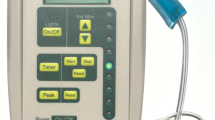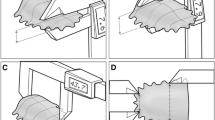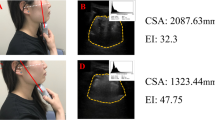Abstract
Maximum tongue strength was investigated and compared to mean swallowing pressure elicited by the anterior tongue to calculate the percentage of maximum tongue strength used during swallowing in 96 participants with normal swallowing, divided into three 20-year age groups. The purposes of this investigation were to investigate normal swallowing physiology and to determine whether tongue strength reserves diminished according to age or gender. The results of the study yielded significant maximum tongue strength differences between the youngest and oldest and middle and oldest age groups; the oldest group had the weakest tongues. Mean swallowing pressure did not differ based on age, but women were found to have significantly higher pressures than men. The percentage of maximum tongue strength used during swallowing did not vary as a function of age, but women used a significantly higher percentage of tongue strength to swallow than men. Based on the results, it appears that a diminishing strength reserve does not exist based on age, but it does exist based on gender. Specifically, it appears that women have a reduced tongue strength reserve compared to men. Clinical implications are discussed.








Similar content being viewed by others
References
Morrell RM. Neurologic disorders of swallowing. In: Groher ME, editor. Dysphagia: diagnosis and management. 2nd ed. Boston: Butterworth-Heinemann; 1992. p. 31–52.
Robbins J, Gangnon RE, Theis SM, Kays SA, Hewitt AL, Hind JA. The effects of lingual exercise on swallowing in older adults. J Am Geriatr Soc. 2005;53:1483–9.
Sorin R, Somers S, Austin W, Bester S. The influence of videofluoroscopy on the management of the dysphagia patient. Dysphagia. 1988;2:127–35.
Splaingard ML, Hutchins B, Sulton LD, Chaudhuri G. Aspiration in rehabilitation patients: videofluoroscopy vs bedside clinical assessment. Arch Phys Med Rehabil. 1988;69:637–40.
Logemann JA. Evaluation and treatment of swallowing disorders. 2nd ed. Austin, TX: Pro-Ed; 1998.
Ekberg O, Hamdy S, Woisard V, Wuttge-Hannig A, Ortega P. Social and psychological burden of dysphagia: its impact on diagnosis and treatment. Dysphagia. 2002;17:139–46.
Riensche LL, Lang K. Treatment of swallowing disorders through a multidisciplinary team approach. Educ Gerontol. 1992;18:277–84.
Crow HC, Ship JA. Tongue strength and endurance in different aged individuals. J Gerontol. 1996;51A(5):M247–50.
Lazarus CL, Logemann JA, Pauloski BR, Rademaker AW, Larson CR, Mittal BB, et al. Swallowing and tongue function following treatment for oral and oropharyngeal cancer. J Speech Hear Res. 2000;43:1011–23.
Nicosia MA, Hind JA, Roecker EB, Carnes M, Doyle J, Dengel GA, et al. Age effects on the temporal evolution of isometric and swallowing pressure. J Gerontol A Biol Sci Med Sci. 2000;55:634–40.
Robbins J, Levine R, Wood J, Roecker EB, Luschei E. Age effects on lingual pressure generation as a risk factor for dysphagia. J Gerontol. 1995;50A(5):M257–62.
Robin DG, Somodi LB, Luschei ES. Measurement of tongue strength, endurance in normal and articulation disordered subjects. In: Moore CA, Yorkston KM, Beukelman DR, editors. Dysarthria and apraxia of speech: perspectives on management. Baltimore: Brookes; 1991. p. 173–84.
Robin DA, Goel A, Somodi LB, Luschei ES. Tongue strength and endurance: relation to highly skilled movements. J Speech Hear Res. 1992;35:1239–45.
Solomon NP, Robin DA, Luschei ES. Strength, endurance, and stability of the tongue and hand in Parkinson’s disease. J Speech Hear Res. 2000;43:256–67.
Stierwalt JAG, Robin DA, Solomon NP, Weiss AL, Max JE. Tongue strength and endurance: relation to the speaking ability of children and adolescents following traumatic brain injury. In: Robin DA, Yorkston KM, Beukelman DR, editors. Disorders of motor speech: recent advances in assessment, treatment, and clinical characterization. Baltimore: Brookes; 1996. p. 243–58.
Stierwalt JAG, Youmans SR. Tongue measures in individuals with normal and impaired swallowing. Am J Speech Lang Pathol. 2007;16:148–56.
Youmans SR, Stierwalt JAG. Measures of tongue function related to normal swallowing. Dysphagia. 2006;21:102–11.
Youmans SR, Stierwalt JAG, Clark HM. Measures of tongue function in healthy adults. Poster session presented at the annual meeting of the American Speech-Language-Hearing Association, Atlanta, GA; 2002.
Kays S, Robbins J, Hind J, Gangnon RE, Porcaro E. Effects of lingual exercise on muscle strength and volume related to dose response. Paper presented at the Dysphagia Research Society annual conference, Scottsdale, AZ; 2006.
IOPI Northwest. Iowa oral performance instrument: user’s manual. Carnation, WA: IOPI Northwest; 2005.
Deshenes MR. Effects of aging on muscle fiber type and size. Sports Med. 2004;34:809–24.
Clark HM, Henson PA, Barber WD, Stierwalt JAG, Sherrill M. Relationships among subjective and objective measures of tongue strength and oral phase swallowing impairments. Am J Speech Lang Pathol. 2003;12:40–50.
Pouderoux P, Kahrilas PJ. Deglutitive tongue force modulation by volition, volume, and viscosity in humans. Gastroenterology. 1995;108:1418–26.
Robinovich SN, Hershler C, Romilly DP. A tongue force measurement system for the assessment of oral-phase swallowing disorders. Arch Phys Med Rehabil. 1991;72:38–42.
Dworkin JP. Tongue strength measurement in patients with amyotrophic lateral sclerosis: qualitative vs quantitative procedures. Arch Phys Med Rehabil. 1980;61:422–4.
Luschei ES. Development of objective standards of nonspeech oral strength and performance: an advocate’s view. In: Moore CA, Yorkston KM, Beukelman DR, editors. Dysarthria and apraxia of speech: perspectives on management. Baltimore: Brookes; 1991. p. 3–13.
Acknowledgments
The authors thank Patricia Youmans and Lisa Nieves as well as the entire Long Island University community for their help in recruitment and support of this endeavor.
Author information
Authors and Affiliations
Corresponding author
Additional information
All work was completed at Long Island University, Brooklyn Campus.
Rights and permissions
About this article
Cite this article
Youmans, S.R., Youmans, G.L. & Stierwalt, J.A.G. Differences in Tongue Strength Across Age and Gender: Is There a Diminished Strength Reserve?. Dysphagia 24, 57–65 (2009). https://doi.org/10.1007/s00455-008-9171-2
Received:
Accepted:
Published:
Issue Date:
DOI: https://doi.org/10.1007/s00455-008-9171-2




